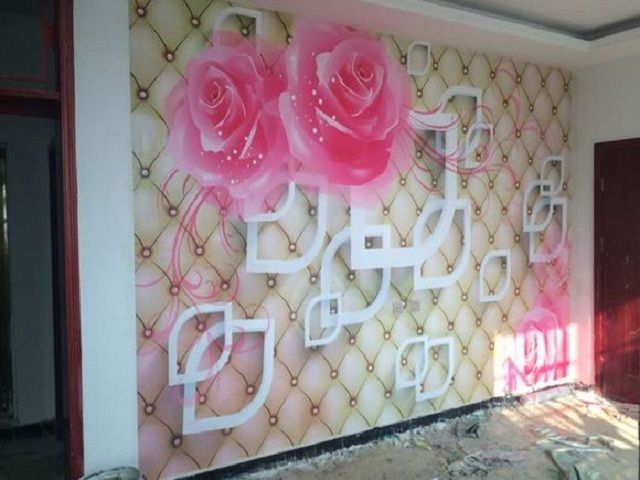Why do they call it the rust belt?
I'll answer
Earn 20 gold coins for an accepted answer.20
Earn 20 gold coins for an accepted answer.
40more
40more
Lucas Turner
Works at the International Development Association, Lives in Washington, D.C., USA.
As a specialist in economic geography and urban development, I can provide a comprehensive explanation of the term "Rust Belt." The term "Rust Belt" originated in the late 1970s and is used to describe a region in the United States that was once a thriving hub of industrial activity but has since experienced a significant decline in manufacturing jobs and economic vitality. This region stretches across the Midwest and the Northeast of the United States, encompassing states such as Ohio, Pennsylvania, Michigan, Indiana, Illinois, and New York.
The name "Rust Belt" is quite literal, as it refers to the physical deterioration of the area's industrial infrastructure. The decline in industrial work led to the abandonment of many factories and manufacturing plants. Over time, these abandoned structures were exposed to the elements, leading to rust and decay. This rusting process is a visual representation of the economic decline that these communities experienced.
The economic factors contributing to the Rust Belt's formation are multifaceted. The rise of globalization and the shift in manufacturing to countries with lower labor costs played a significant role. Automation and technological advancements also contributed to job losses, as machines replaced human labor in many industries. Additionally, changes in trade policies and the decline of certain industries, such as steel and coal, further exacerbated the situation.
The social implications of the Rust Belt's decline are profound. High unemployment rates, poverty, and population loss have been common issues in these areas. Many people who once worked in factories and mines had to find new ways to make a living, often in lower-paying service sector jobs. The loss of jobs also led to a decrease in population as people moved to other regions in search of work.
The environmental impact of the Rust Belt is another important aspect. The decline of heavy industry has, in some cases, led to environmental improvements, as fewer pollutants are being released into the air and water. However, the legacy of industrial pollution remains, with many areas still dealing with the effects of contamination from past industrial activities.
Efforts to revitalize the Rust Belt have been ongoing for decades. Strategies have included investing in education and workforce development to prepare residents for new job opportunities, attracting new industries to the region, and promoting entrepreneurship. There has also been a focus on repurposing old industrial sites for new uses, such as turning abandoned factories into commercial spaces or residential areas.
In conclusion, the Rust Belt is a term that encapsulates the economic, social, and environmental challenges faced by a once-thriving industrial region in the United States. While the region has faced significant hardships, there are also stories of resilience and innovation as communities work to rebuild and redefine their economic futures.
The name "Rust Belt" is quite literal, as it refers to the physical deterioration of the area's industrial infrastructure. The decline in industrial work led to the abandonment of many factories and manufacturing plants. Over time, these abandoned structures were exposed to the elements, leading to rust and decay. This rusting process is a visual representation of the economic decline that these communities experienced.
The economic factors contributing to the Rust Belt's formation are multifaceted. The rise of globalization and the shift in manufacturing to countries with lower labor costs played a significant role. Automation and technological advancements also contributed to job losses, as machines replaced human labor in many industries. Additionally, changes in trade policies and the decline of certain industries, such as steel and coal, further exacerbated the situation.
The social implications of the Rust Belt's decline are profound. High unemployment rates, poverty, and population loss have been common issues in these areas. Many people who once worked in factories and mines had to find new ways to make a living, often in lower-paying service sector jobs. The loss of jobs also led to a decrease in population as people moved to other regions in search of work.
The environmental impact of the Rust Belt is another important aspect. The decline of heavy industry has, in some cases, led to environmental improvements, as fewer pollutants are being released into the air and water. However, the legacy of industrial pollution remains, with many areas still dealing with the effects of contamination from past industrial activities.
Efforts to revitalize the Rust Belt have been ongoing for decades. Strategies have included investing in education and workforce development to prepare residents for new job opportunities, attracting new industries to the region, and promoting entrepreneurship. There has also been a focus on repurposing old industrial sites for new uses, such as turning abandoned factories into commercial spaces or residential areas.
In conclusion, the Rust Belt is a term that encapsulates the economic, social, and environmental challenges faced by a once-thriving industrial region in the United States. While the region has faced significant hardships, there are also stories of resilience and innovation as communities work to rebuild and redefine their economic futures.
2024-05-23 15:05:19
reply(1)
Helpful(1122)
Helpful
Helpful(2)
Studied at the University of Melbourne, Lives in Melbourne, Australia.
DEFINITION of 'Rust Belt' ... This region received the name, Rust Belt, in the late 1970s after a sharp decline in industrial work left many factories abandoned and desolate, causing increased rust from exposure to the elements. It is also referred to as the manufacturing belt as well as the factory belt.
2023-06-13 05:47:56
Oliver Davis
QuesHub.com delivers expert answers and knowledge to you.
DEFINITION of 'Rust Belt' ... This region received the name, Rust Belt, in the late 1970s after a sharp decline in industrial work left many factories abandoned and desolate, causing increased rust from exposure to the elements. It is also referred to as the manufacturing belt as well as the factory belt.




